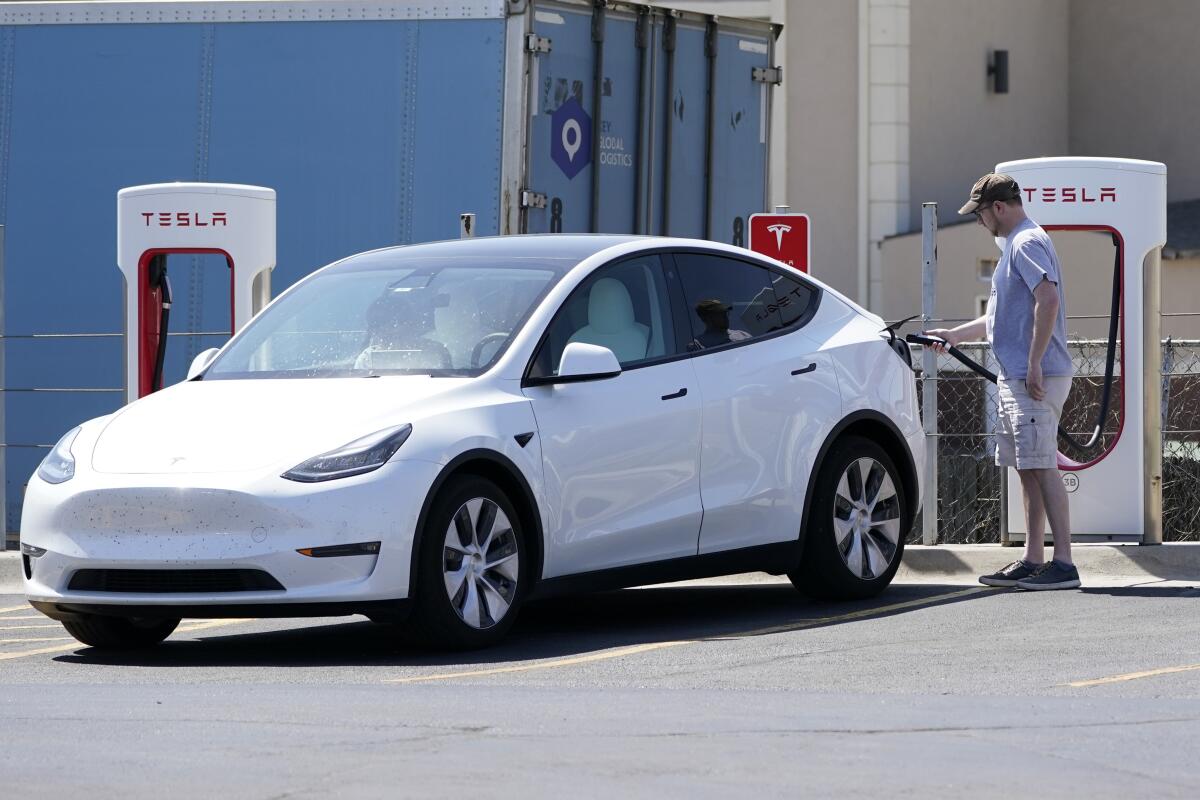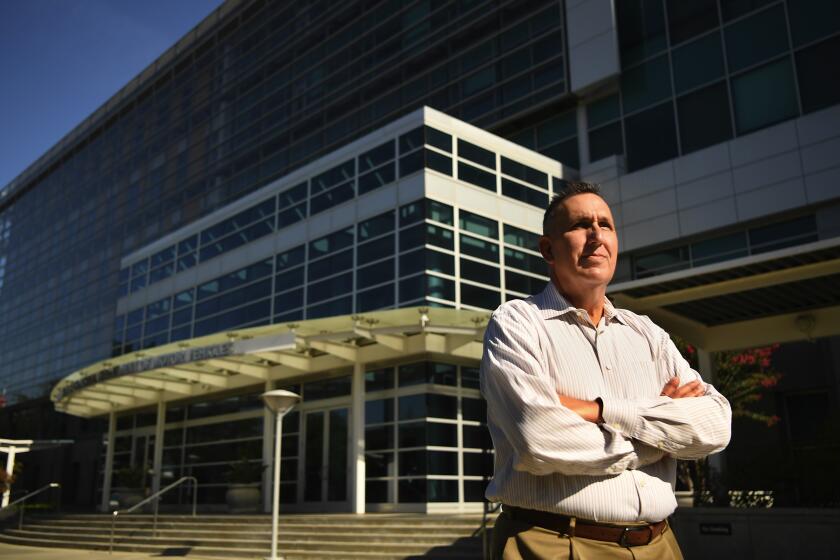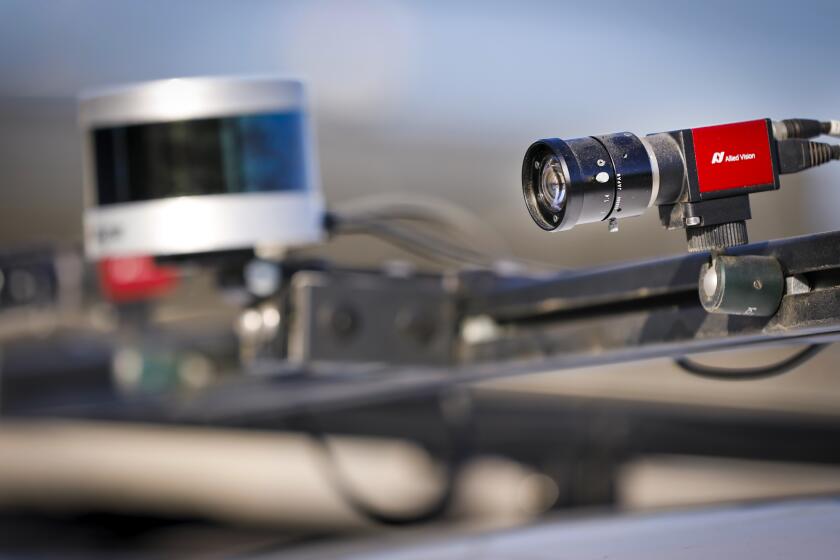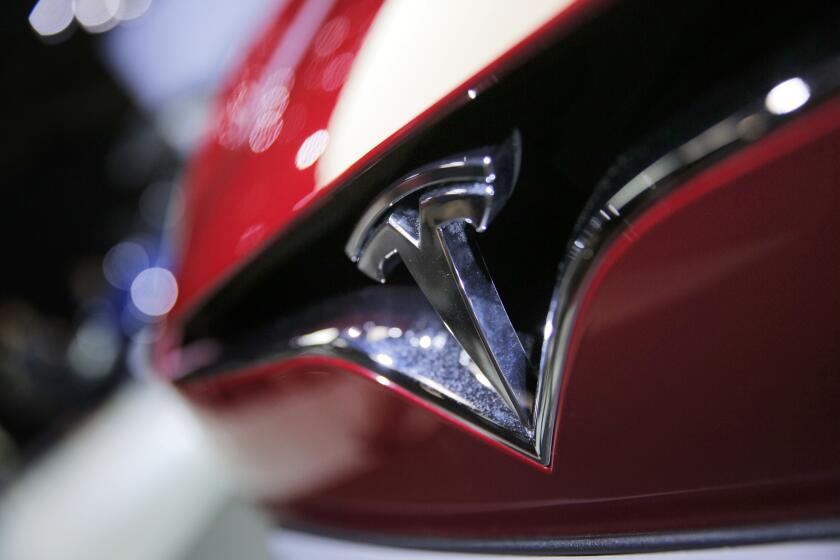Nearly 400 crashes of automated vehicles in less than a year, new data show

- Share via
DETROIT — Automakers reported nearly 400 crashes of vehicles with partially automated driver-assist systems, including 273 involving Teslas, according to statistics released by U.S. safety regulators Wednesday.
The National Highway Traffic Safety Administration cautioned against using the numbers to compare automakers, saying it didn’t weight them by the number of vehicles from each manufacturer that use the systems, or how many miles those vehicles traveled.
Automakers reported crashes from July of last year through May 15 under an order from the agency, which is examining such crashes broadly for the first time.
“As we gather more data, NHTSA will be able to better identify any emerging risks or trends and learn more about how these technologies are performing in the real world,” said Steven Cliff, the agency’s administrator.
Tesla’s crashes happened while vehicles were using Autopilot, “Full Self-Driving,” Traffic Aware Cruise Control or other driver-assist systems that have some control over speed and steering. The company has about 830,000 vehicles with the systems on the road.
The next closest of a dozen automakers that reported crashes was Honda, with 90, but Honda says it has about 6 million vehicles on U.S. roads with such systems. Subaru was next with 10 crashes, and all other automakers reported five or fewer.
Why doesn’t the DMV have anything to say about its investigation of Tesla’s autonomous driving claims after a full year? The agency isn’t talking, and lawmakers are getting impatient.
In a June 2021 order, the NHTSA told more than 100 automakers and automated-vehicle tech companies to report serious crashes within one day of learning about them and to disclose less-serious crashes by the 15th day of the following month. The agency is assessing how the systems perform and whether new regulations may be needed.
The NHTSA also said that five people were killed in the crashes involving driver-assist systems, and six were seriously hurt.
Tesla’s crash number also may be high because it uses telematics to monitor its vehicles and get real-time crash reports. Other automakers don’t have such capability, so their reports may come slower or crashes may not be reported at all, the NHTSA said. A message was left with Tesla seeking comment.
Tesla’s crashes accounted for nearly 70% of the 392 reported by the dozen automakers. Although the Austin, Texas, automaker calls its systems Autopilot and “Full Self-Driving,” it says the vehicles cannot drive themselves, and the drivers must be ready to intervene at all times.
They collect user data for their own ends, but when it comes to allowing crash data to be used to improve safety, these companies push for less transparency.
Manufacturers were not required to report how many vehicles they have on the road that have the systems, nor did they have to report how far those vehicles traveled or when the systems are in use, the NHTSA said. At present, those numbers aren’t quantifiable, an agency official said.
However, the NHTSA may seek such information later. In the meantime, the new data have enabled it to find out about crashes much faster than before. At present, it’s using the crash data to look for trends and discuss them with the companies, the agency said.
Already, NHTSA has used the data to seek a recall, open investigations and provide information for existing inquiries, officials said. Also, they said it’s difficult to find out how many drivers actually use the technology.
“This will help our investigators quickly identify potential defect trends that can emerge,” Cliff said. “These data will also help us identify crashes that we want to investigate and provide more information about how people in other vehicles interact with the vehicles.”
In light of videos showing self-driving Teslas attempting dangerous maneuvers, the California DMV is considering whether to require the company to conform to the same laws as other robot car makers.
Honda said it has packaged the systems to sell more of them, which could influence its numbers. “The population of vehicles that theoretically could be involved in a reportable event is much greater than the population of vehicles built by automakers with a less-aggressive deployment strategy,” the company said.
Also, reports to the NHTSA are based on unverified customer statements about whether automated systems were running at the time of a crash. Those crashes may not qualify for reporting to NHTSA after more data are gathered, Honda said.
The Alliance for Automotive Innovation, which represents most automakers, said the data collected by NHTSA aren’t sufficient on their own for the evaluation the safety of automated vehicle systems.
The NHTSA’s order also covered companies that are running fully autonomous vehicles, and 25 reported a total of 130 crashes. Google spinoff Waymo led with 62, followed by Transdev Alternative Services with 34 and General Motors-controlled Cruise LLC with 23.
Waymo, the autonomous vehicle unit of Alphabet, said it has more than 700 autonomous vehicles in its fleet. The company is running a fully autonomous ride-hailing service in Arizona and testing one in California. The company said all the crashes happened at low speeds, with air bags inflating in only two of them.
More to Read
Sign up for Essential California
The most important California stories and recommendations in your inbox every morning.
You may occasionally receive promotional content from the Los Angeles Times.













